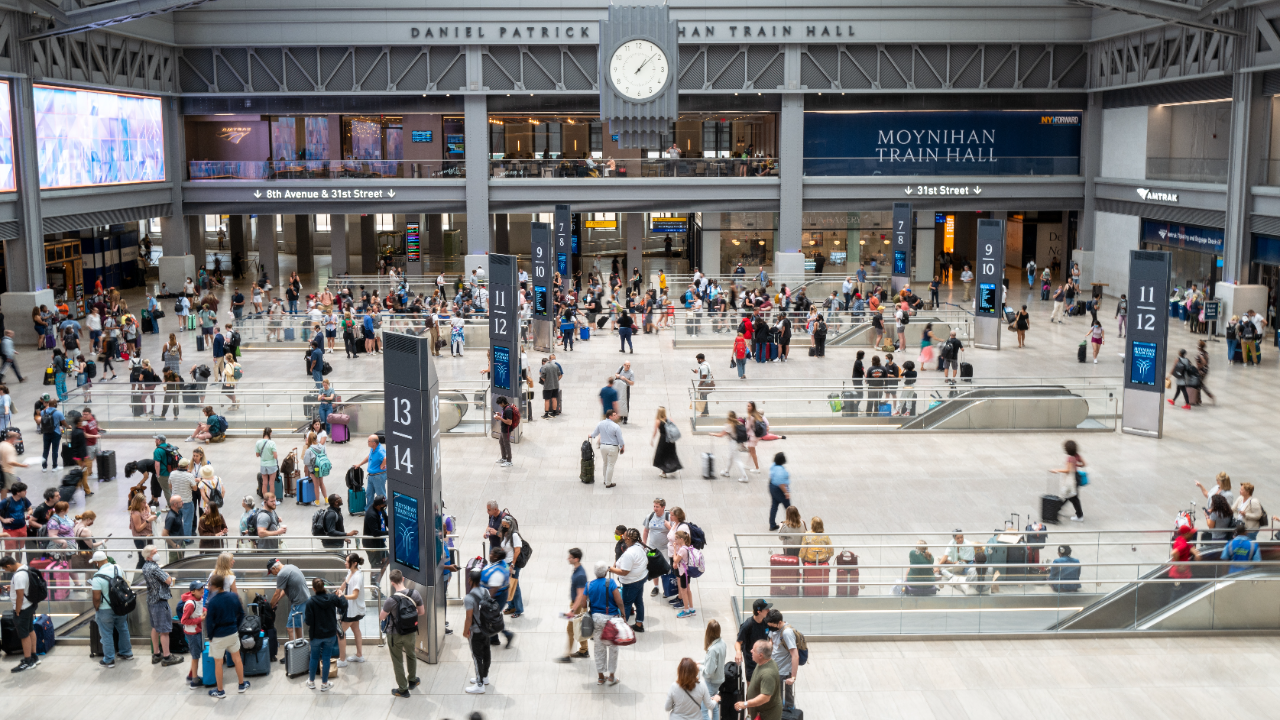Paying off student loans in a recession

The economy in which you graduate dictates not only your job prospects but also your earning potential. People who graduated college right after the Great Recession of 2008 experienced lower employment rates and earnings through the first decade of their careers than those who graduated before the recession. This may explain why student loan repayment fell sharply during that time, as many graduates struggled to find good-paying jobs to keep up with repayment.
Although we’re not in a recession now, there’s heavy speculation that we will have one soon. Experts are predicting that it will be a mild recession, however. Whether you’re a recent grad or have been paying your debt for years, it’s always best to be prepared to pay off student loans. Here’s how to stay on top of your student loan payment if a recession hits.
Student loans during the Great Recession
Between December 2007 and June 2009, the U.S. experienced one of its longest economic downturns, known as the Great Recession, which peaked in 2008. During that time, many adults flocked back to college in hopes that a newly minted degree would be the path to a better job.
But there was one problem: Many of these adults enrolled at two-year for-profit colleges, which tend to have higher price tags than four-year public institutions. This means that those people graduated college with substantially more debt than their peers who attended public institutions and who graduated a year or two before the Great Recession.
This, combined with fewer job opportunities and a lack of flexible student loan repayment options, caused student loan default rates to increase by as much as 17 percentage points between late 2006 and 2009.
Current state of student loans
Americans collectively owe a staggering $1.6 trillion in federal student loans — and counting. The Department of Education estimates that the average undergraduate student leaves school with $25,000 in student loans, and it’s a problem affecting more than 45 million people from all walks of life as of August 2022.
In an effort to tackle the current student debt crisis, President Joe Biden unveiled a three-part student debt relief plan in August of 2022, which included forgiving up to $20,000 in student loans. The Supreme Court struck down that plan in June of 2023.
Federal forbearance was extended several times but expired in October 2023. Federal student loans started accruing interest on Sept. 1, 2023.
Biden’s administration announced that, in the face of the Supreme Court decision, it outlined a new approach to help with debt relief. It aims to create more affordable repayment plans and a 12-month repayment program from October 1, 2023, or September 30, 2024, to reduce penalties for financially vulnerable borrowers who miss repayments.
The Biden Administration also announced it would be automatically forgiving federal student loans for certain people paying the equivalent of 20 to 25 years who were in the income-driven repayment plans.
The administration also introduced the SAVE (Saving on Valuable Education) Plan, which allows partial or periodic payments to lower the amount of accrued interest. Borrowers who were part of the REPAYE Plan automatically enroll in the SAVE Plan to make paying off student loans easier.
How to pay student loan debt in a recession
Recessions are marked by decreased economic activity, which usually causes massive layoffs or reduced working hours — all of which can hurt your wallet.
Derek Brainard, national director of financial education at AccessLex Institute, says that during times of economic crisis, your primary focus should be “simply doing what needs to be done to keep loans current and in good standing, rather than paying them off quickly.” Here are some ideas you can explore to help you do just that.
Take inventory of your options
A key part of keeping your student loans current is knowing what relief options may be available to you in case of economic hardship.
If you have private student loans, lenders usually offer short-term forbearance or deferment for borrowers who are going through financial hardship. Although both of these alternatives will temporarily pause your payments, interest will continue to accrue during this time, which means your payments could go up once they resume. Some lenders may also let you make interest-only payments for a few months. You’ll have to contact your lender or servicer to find out your options.
Likewise, federal student servicers also offer forbearance and deferment options, just like private lenders do, in addition to flexible repayment plans. You can apply for one of these options by contacting your servicer.
Apply for an income-driven repayment plan
One of the benefits of having federal student loans over private ones is that you have access to various income-driven repayment plans. Under an income-driven repayment plan, your monthly payments are capped between 10 and 20 percent of your discretionary income and can sometimes be as low as $0 if you’re unemployed.
To apply, log into your Federal Student Aid account and complete the form. You can also contact your student loan servicer directly. Although income-driven repayment can make your payments more affordable, it will slow down your repayment process. However, if you have a balance at the end of your new repayment term, you could get the remaining amount forgiven.
See if you qualify for forgiveness
You could qualify for the Department of Education’s Public Service Loan Forgiveness program. You have to have federal student loans and work for a qualifying nonprofit or a U.S. government agency at the state, tribal or federal level.
With this program, you get the remainder of your federal student loan balance forgiven after making 120 payments on an income-driven repayment plan while working for a qualifying employer.
Consider refinancing
Refinancing consists of replacing your old loans with a new one. If you have good-to-excellent credit, refinancing your student loans could help you make your payments more manageable in two ways: by lowering your interest rate or by extending your repayment term. However, this last option means that you’ll pay more on interest over the life of your loan, as it will take you more years to pay off your balance.
It’s also worth noting that refinancing is mostly a good idea for private student loans because refinancing your federal student loans would cause you to lose key benefits, like income-driven repayment and access to forgiveness.
Refinancing may also be a good idea if you have variable-rate loans since you can lock in a fixed rate and protect yourself from further interest rate increases. This is especially true if you work in an industry more vulnerable to layoffs during recession periods, such as travel and leisure, retail, manufacturing and real estate, since it can make your payments more predictable.
The bottom line
Financial experts are still predicting a mild recession on the horizon. That may impact your ability to repay your student loans, leading to the question: how do I pay my student loans in a recession? While the Supreme Court struck down Biden’s student loan forgiveness program, the administration is still working to make federal student loan payments more manageable. Other options include looking into forbearance or deferment, income-driven repayment plans, Public Service Loan Forgiveness or refinancing.
Frequently asked questions
-
The National Bureau of Economic Research defines a recession as “a significant decline in economic activity that is spread across the economy and that lasts more than a few months.”
-
During a recession, all economic activity slows down, from production to spending. This, in turn, causes massive layoffs or a reduction in working hours by employers in order to mitigate losses.
-
Recessions can be caused by a variety of factors. These include an overheated economy, a rise in interest rates or the end of a trend, which can cause many businesses to fail at the same time, leading to loss of working hours and economic output.
-
Not paying your student loans is tied to some serious consequences, including the following:
- You could lose eligibility for additional federal student aid (if you default on federal loans).
- You may see dents in your credit report and score, which could hinder your ability to buy a house or a car.
- Your wages could be garnished to repay your debt.
- Your current balance, as well as any unpaid interest, could become automatically due.
- You could be taken to court, which entails other charges, like attorney and collection fees.
- Your institution could withhold your transcripts.
- You could get your federal benefits and tax refunds garnished.
-
Student loan payments restarted in October of 2023, but an on-ramp term going from October 1, 2023, to September 30, 2024, may reduce missed payment penalties. To find out when your loans are due, visit your student loan servicer’s website and log into your account. You can also contact your servicer’s customer service team to find out your due date.
-
Federal student loan borrowers who work for a U.S. government agency at the state, federal or tribal level or for a qualifying nonprofit organization may qualify for Public Service Loan Forgiveness. This program requires you to make 120 payments while working for that employer, after which the remainder of your student loan balance is forgiven.
-
According to an analysis by the Department of Education, the average undergraduate student in the U.S. leaves college with $25,000 worth of student loans.






